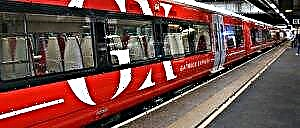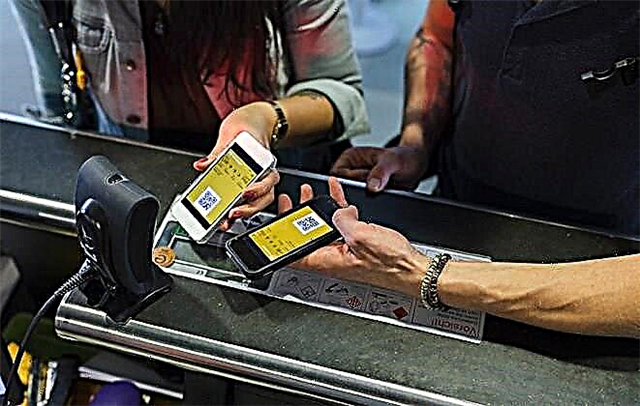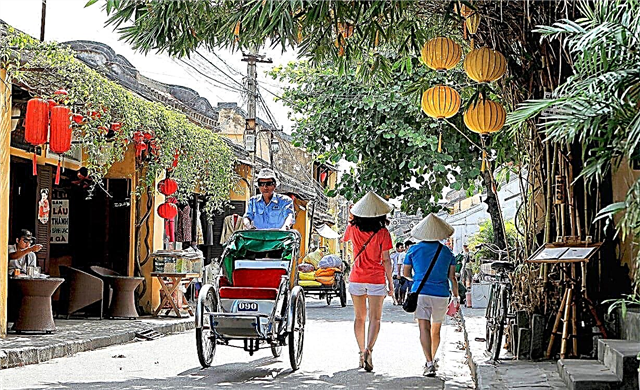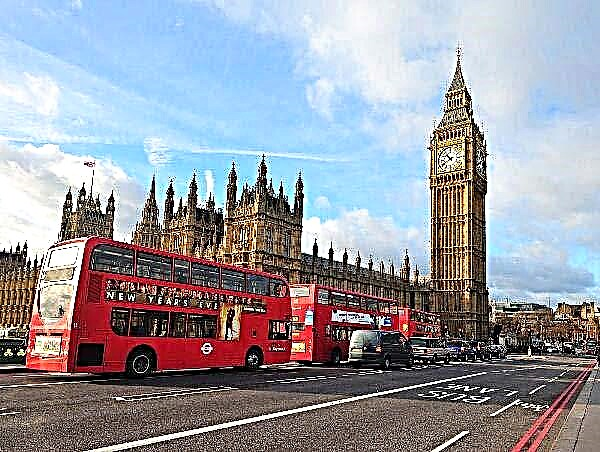The United Kingdom has a modern developed transport infrastructure, thanks to which millions of citizens of this state and tourists have the opportunity to quickly and comfortably get anywhere in the country. Transport in Great Britain with its centuries-old history and traditions is represented today by air and land vehicles, as well as river and sea vessels. Those who travel to the British Isles or intend to settle here will find it useful to learn how to use local transport and how much it costs.

Public transport in the UK: history and modernity
One of the advantages of living in the Kingdom is the availability of modern transport communications, but at the same time public transport in the UK is one of the oldest in the world.
 At the end of the 19th century, horse-drawn omnibuses drove through the streets of British cities, carrying 25-30 passengers. In London, the world's first underground metro was built, the cars of which were pulled by steam locomotives with the wind and smoke, and the red double-decker buses (Double Decker) that appeared at the beginning of the 20th century have become one of the symbols of the United Kingdom.
At the end of the 19th century, horse-drawn omnibuses drove through the streets of British cities, carrying 25-30 passengers. In London, the world's first underground metro was built, the cars of which were pulled by steam locomotives with the wind and smoke, and the red double-decker buses (Double Decker) that appeared at the beginning of the 20th century have become one of the symbols of the United Kingdom.
The UK today has one of the best public transport systems in the world. In 2021, the main passenger load in British cities falls on the metro (London, Birmingham, Glasgow, Liverpool, Manchester, etc.) and UK buses (more than 100 thousand, of which 17 thousand are double-decker).

There are more than 50 private airlines and 140 licensed airports in the UK, but most of the passenger traffic comes from international flights.
Sea and river navigation has somewhat lost its importance, especially after the commissioning of the Eurotunnel under the English Channel. Nevertheless, every day, dozens of ferries and ships of various companies transport thousands of passengers from the continent to the islands and vice versa, connecting the UK with Northern Ireland, the Isles of Man, Jersey, etc.
Railways connect all parts of the state. Traveling on high-speed trains can save you time and money.
Intercity and suburban communication is most profitable by buses and railways. In London, the underground, tram, and taxi are widely used. You can use the rental of bicycles, motorcycles, cars. The transport infrastructure of Wales and Scotland is dominated by rail and road transport.
Take a sociological survey!
Metropolitan transport system: what is the best ride in London
Greater London's population exceeded 9.1 million in 2021, but the capital's transport system, Transport for London (TFL), is still coping with heavy traffic. Peak hours: from 6.30 to 9.30 and from 16.00 to 19.00).
Public transport starts at 4.30 (metro - from 5.30), and ends at one in the morning (on Sundays - from 7.00 to 24.00).
The City Hall promotes the most efficient use of all resources. So, from the depressed area of London docks to the city center and to the metro stations, 4 lines of the high-speed light train - Docklands Light Railway (DLR) were launched, and river buses run along 20 routes along the Thames. The latest information is available on the London transport website.
The toll mechanism is of particular interest. The territory of London is divided into 9 tariff zones. The highest rates are for the 1st and 2nd central zones, which are especially popular with tourists.
Payment for travel on the subway, on buses, on the cable car across the Thames of the Emirates Air Line, on the DLR lines, etc.can be made using:
- Travel Сard. Allows you to make an unlimited number of trips per day, 7 days, month and year. For travel during the day, you must purchase a paper Day Travel Card for adults (valid from the date of purchase until 4.30 the next day) and children (valid only until 22.00). When buying, be sure to indicate the zones that the buyer plans to use. You can buy a card in vending machines at metro stations, at bus stops, and when traveling by bus - from the driver.

- Bank card (Visa, MasterCard, American Express). The daily limit is similar to the Oyster Card.
- Oyster Card Smart Cards. It is also loaded with 7-day, monthly and one-year Travel Cards.

Children under 5 years old can ride for free, for free travel for children aged 5 to 10 and from 11 to 15 years old, an Oyster Card with a photo of the child is required.

Children between 16 and 18 years old will need a 16+ Zip Oyster PhotoCard, which offers a 50% discount.

If the child does not live in London, he can use the Young Visitor discount - a 50 percent discount on the cost of travel for 14 days.
Foreigners have the opportunity to order a children's Oyster Card with a photo online 4 weeks before the planned visit by paying 10 pounds.
You can buy and top up the card at metro stations, railway stations, newsstands, etc. When buying an Oyster Card, you need to pay a deposit of 5 pounds and a certain amount from which money will subsequently be debited (the Pay As You Go principle applies). The day card is valid until 04.30 the next day.
It is necessary to correctly calculate the amount of money to be put on the card. If the balance is negative, the card stops being served until it is replenished.
The fare depends on:
- numbers and the number of zones through which the trip is carried out.

For each category of travel document, there is an upper bar (Caps) for withdrawing money for daytime use of public transport, after which the money will no longer be withdrawn. For example, Caps for day trips in all zones (from 1 to 9) when paying with Pay As You Go will be 18.30 pounds, with Travel Card - 23.5 pounds.
- passenger categories - discounts are provided for children, old people, disabled people, etc .;
- the validity period of the card. For example, if a one-day card in the 1st zone costs 7 (Oyster Card) and 13.1 pounds (Travel Card), then a seven-day card costs 35.1 pounds.
When buying a Travel Card for several passengers (10 or more), a card with a 50% discount for trips in zones 1 to 6 is provided at the same time - Group Day London Travelcard.
An adult passenger must pay for the day of using public transport in London when using the Oyster Card from 7 to 18.3 pounds, Travel Card - from 13.10 to 23.5 pounds.
 Each passenger must attach a travel card to the validator at the entrance to the metro (and at the exit, otherwise the money will be withdrawn at the highest rate), on the bus, tram, etc.
Each passenger must attach a travel card to the validator at the entrance to the metro (and at the exit, otherwise the money will be withdrawn at the highest rate), on the bus, tram, etc.
In order to compare the transport system of Great Britain with other countries, we suggest reading the article "Public transport network in Germany".
The absolute leader in transportation is the metro (Tube)
 The London Underground is one of the largest in the world: 12 lines, 270 stations and 1.5 billion passengers a year. This is the fastest and easiest way to get around London.
The London Underground is one of the largest in the world: 12 lines, 270 stations and 1.5 billion passengers a year. This is the fastest and easiest way to get around London.
The subway logo is a red hoop with a horizontal blue line with the station name.
Having looked at the scheme of the London Underground, at the first moment you can become desperate: to understand all these interweaving and tariffs seems unthinkable.

In fact, not everything is so scary. There are a few simple things to understand:
- there are main lines (with an interval between trains up to 5 minutes) and minor (waiting time up to 15-30 minutes);
- each train has a final destination, and trains of different lines can arrive at one station. On the platform, the scoreboard notifies about the arrival of trains with an indication of the end point of their journey - you need to carefully monitor and wait for yours.
Arriving at the destination station, you should leave the carriage and follow in the direction of Wayout, not forgetting to re-mark your travel card when you exit at the turnstile. The southern districts of the city are covered by 4 lines of the surface "light metro" - DLR.
You can familiarize yourself with the working conditions of a similar type of transport in other countries by reading the article "Metro in the capital of Finland".
London taxi
There are several types of taxis in London. The classic Black cab is widely known - one of the hallmarks of London. The cars are equipped with a yellow illuminated TAXI sign.
The car can accommodate 5 passengers (in the rear) and their luggage (to the left of the driver). Equipped with child seats, wheelchair-friendly.

Black cab can pick up passengers on the street or in special parking lots, it can be ordered by phone. Payment in cash or by credit card - per mileage and per minute.
Rates depend on the time of day and day of the week. The minimum fare is £ 3. Order by phone or online - £ 2 extra.
Less expensive - pre-order cars (minicab), as well as route taxis (minibuses). The fare can be set depending on the distance, travel time (according to the meter) or according to the established tax for the route.
The phone numbers for ordering a taxi, contact information and other useful information can be found on the website.
Urban classics - trams
The United Kingdom's policy of eliminating / replacing trams with trolleybuses has been overhauled: this public transport in the UK has proven to be almost the ideal type of urban carrier.
At rush hour, the multi-section tram exceeds the number of passenger seats for trolleybuses. The tram is more environmentally friendly, safer for passengers (grounded through wheels and rails), has a long service life, the laying and maintenance of tram lines is less expensive than trolleybus lines.
As a result, trolleybuses in London can only be seen in the Public Transport Museum.
In 2003. Several dozen used trams were transported from Vienna and tram routes were restored, primarily in the southern districts of the city, not covered by the metro.

The daily limit for the fare on the tram for an adult passenger is 4.5 pounds, the combined travel on the bus and the tram is 5. There are discounts for unemployed people looking for work, children, students, etc.
Bus traffic in London
Buses are the second most common public transport in London, after the underground. Every day more than 6 million passengers use the services of several companies that have signed contracts with TfL:
Abellio Bus - Serves South, West, Central London;
Arriva London - 13% of all buses in the city;
Go-Ahead London - 2,200 buses.
The geography of the bus traffic coverage is presented on the maps of the city districts with directions on the website. Boarding the bus is done at stops, but not all of them necessarily stop - you need to "vote". To get off the bus at a stop, first press the red button on the handrail.

You should enter the bus through the front door (a validator is also installed here), and exit through the central one.
At night, night buses run around the city (there is the letter N in front of the number) with a mandatory stop at Trafalgar Square. The fares are similar to those on a tram.
Bike rent

Fans of outdoor activities and cycling can use one of the 750 bike stations (Barclay bike) in London and rent a bike. Annual rental will cost £ 90.
Bicycle access - £ 2. You need to pay at a kiosk using a bank card. After payment, a code is printed with which you can unlock the bike you like.
Having received a bike, you can ride for free for the first half hour, the next 30 minutes of rental cost 2 pounds. Under certain conditions, a long walk can cost the same amount.
The main thing is to “reset” the first 30 minutes in time. To do this, you need to return the bike to the dock before the expiration date. If this is not done, then the money will be debited from the card for the next half hour.
After resetting the first 30 minutes, you can take another bike for the next 30 minutes. If it is impossible to return the bike due to lack of free seats, you can take 15 minutes for free by clicking the No docking point free button on the dock.
The location of the bike stands can be found on the website.
Failure to return or breakage of a bike is punishable by £ 300. Using the Santander Cycles app will simplify the rental procedure, will not be tied to stations and will receive an access code on your phone.
Popular routes in London
The most requested public transport routes that are most often of interest to visitors to London are the road from the city center to the nearest airports: Heathrow, Standstead and Gatwick.
To Central London from Heathrow Airport
Heathrow Airport, the capital's main air gate, is located 24 kilometers from Central London. Visitors can get from it to the city center in several ways:
- Taxi. The journey takes 30 to 60 minutes. The cost will range from £ 48 to £ 90. Additional airport tax - £ 2.8.
- Bus. The fare is £ 6. Every 20 minutes, there are flights from terminals 1, 2, 3 of the airport from the Central Bus Station to Victoria (A1) and Euston (A2).
- Underground. Heathrow is connected to the city center by the Piccadilly Line. The waiting time for the train is 5 minutes. The trip lasts 55 minutes. When paying in cash, a ticket costs £ 6, with a bank card or Oyster - 5.1 (rush hour) and 3.1 (off rush hour).

- Take the Heathrow Express to Paddington Station. Trains run from 05.12am to 11.48pm from Heathrow Central Station and from 05.10am to 11.25pm in the opposite direction. The interval between trains is 15 minutes. Travel time is 15 minutes. The fare for one adult in express class at any time of the day is 25 pounds, round trip - 37. Business class will cost 32 and 55 pounds, respectively. Children under 15 years old are allowed free of charge.
To central London from Gatwick Airport
Gatwick, London's second largest airport, is located about 45 km south of the city. You can leave the airport:
- By Train: The Gatwick Express, Southern and Thameslink trains to London Victoria Station.

Tickets are purchased at the box office, online and from the conductor on the train. Travel time by express - 35 minutes. The cost of the ticket is from 17.8 pounds, round trip - from 33.7. The train departs from the platform at the South Terminal of the airport. Express runs from 04.35 am to 01.35 am. The waiting time for an express train is from 15 to 30 minutes. You can take 2 suitcases with you free of charge with a total weight of up to 40 kg. Passengers arriving at the North Terminal are provided with a 24-hour free automatic shuttle that will take them to the South Terminal in two minutes. Southern and Thameslink trains run 24/7 with a waiting time of 5 to 15 minutes and a journey time of 50 minutes. The fare is from 16.7 to 25.1 (first class).
Southern and Thameslink trains run 24/7 with a waiting time of 5 to 15 minutes and a journey time of 50 minutes. The fare is from 16.7 to 25.1 (first class).
- By bus. Buses and minibuses depart from both the South and North terminals and continue to Victoria Coach Station. Departure - every 20-30 minutes. The duration of the trip is 95 minutes. The fare for the National Express buses is 10 pounds, the Easy Bus is between 4 and 6 pounds.
- By taxi. The journey takes approximately 70 minutes. The taxi works around the clock. The payment for an economy class car will be 88 pounds, for a minibus with 7 seats - 189.
Road to London from Standstead Airport
Stansted Airport is located in Essex, 48 km from London, serving low-cost airlines. Has one terminal.
 The easiest way to quickly get to the capital (the last stop of Liverpool street) is to take the Stansted Express train. Express runs from 05.30 am to 00.30 am every 15 minutes, it departs from the station (on the first level) 2 minutes walk from the terminal (on the second level).
The easiest way to quickly get to the capital (the last stop of Liverpool street) is to take the Stansted Express train. Express runs from 05.30 am to 00.30 am every 15 minutes, it departs from the station (on the first level) 2 minutes walk from the terminal (on the second level).
It is 47 minutes on the road with one intermediate stop - Tottenham Hale (on the Victoria tube line). A standard ticket for one adult costs 18.9 pounds, business class - 25.8, first class - 26.8 pounds.
You can save money by immediately taking a return ticket: a round trip ticket costs 29.9 pounds.Discounts are provided for children from 5 to 15 years old, as well as for a family or company.
The regional train (from 9.00 to 22.00) departs from Standsted every hour, travel time is just over an hour. The price of a regular ticket is £ 21.8, first class is £ 28.1. On the way, the train makes frequent stops at which you can get off earlier.
You can also get to the capital using the services of one of three bus companies:
- National Express. Buses serve routes A6, A7, A8, A9. The price is quite reasonable - 11 pounds. The interval between departures is 15-20 minutes (at night - about an hour). The duration of the trip to London is one and a half to two hours.
- Easy Bus. Payment - 8 pounds.
- Terra Vision. The company's buses serve two routes: to the final stop at Victoria Station with an intermediate stop at Baker Street (120 minutes) with a price of 8 pounds, to the final stop of Liverpool Street with a stop in Stratford (85 minutes) at a price of 7 pounds.
A taxi ride starts at £ 90. The taxi rank is open around the clock, located on the right side of the terminal exit.
The state of the Wales transport system
Wales' transport infrastructure is not dense. The only international airport is located 20 km from Cardiff.
Both Cardiff and Bridgent are accessible by rail. From the airport to Rhoose Cardiff International Airport station can be reached by shuttle (10 min. On the road, cost 1 pound). Domestic flights are served by the airport on the island of Anglesey.
The Wales railway system consists of three branches that run from east to west. The Welsh narrow-gauge railways - Teifi Valley Railway, Snowdon Mountain Railway and others - have become especially famous, which today have turned into a tourist attraction.
The most important role in the life of the region is played by motor transport. Highways and roads in Wales are of high quality.
Intercity bus service is provided by National Express, while in remote areas, buses of the Royal Mail UK are engaged in transportation of passengers.
There is a ferry service with Ireland in the cities of Swansea, Fishguard and others.
Transport in Scotland
 The greatest development in the transport infrastructure of Scotland was received by rail and road transport. The railway is the fastest and most economical way to travel here.
The greatest development in the transport infrastructure of Scotland was received by rail and road transport. The railway is the fastest and most economical way to travel here.
Popular routes:
- The road from London to Edinburgh. The Caledonian Sleeper express night express travels the distance in 4.5 hours, costing 17-124 pounds.
- The road between Glasgow and Edinburgh is an hour's journey, £ 14.9.
The largest rail companies in Scotland: First Scot Rail, East Coast, Virgin Trains.
Airlines connect Scotland with the rest of the United Kingdom and abroad. The largest airports are in Edinburgh, Glasgow, Aberdeen and Prestwick.
There is an active bus service between airports and cities: Lothian Regional Transport, Guide Friday, Scottish Citylink Coaches, National Express, etc. Postal minibuses are transported to remote areas with a small population.
You can learn more about the work of the post office in the UK from the material “How the UK Postal Service works”.
Ferries provide connections to the insular part of Scotland (over 60 islands) and Northern Ireland. Ferry tickets should be booked well in advance.
Public transport is represented primarily by buses and the metro line in Glasgow. The revival of trams began in the 2000s.
Air transport in the United Kingdom
 Air transport in the UK surpasses all other modes of travel in the country in terms of popularity. In addition to the global megahub - Heathrow Airport - there are several other important international airports in the United Kingdom: Gatwick, Standford, Luton, Manchester, Glasgow, Cardiff, Edinburgh.
Air transport in the UK surpasses all other modes of travel in the country in terms of popularity. In addition to the global megahub - Heathrow Airport - there are several other important international airports in the United Kingdom: Gatwick, Standford, Luton, Manchester, Glasgow, Cardiff, Edinburgh.
The total number of civil airports exceeds 150. Passenger service in most of them is efficient and of high quality.
The largest air carrier in Britain is British Airways, with EasyJet in second place in terms of the number of passengers carried.
Learn about how British Airways and the European regional airline Flybe work.
Railways in the UK
Rail transport in Great Britain is one of the oldest in Europe. The first steam locomotives appeared here almost 200 years ago, and since then the entire territory of the state has been covered with a network of railways with a total length of more than 34 thousand km: intercity, suburban trains, surface metro, international line from the Eurotunnel, tourist railway routes. The central place in it is occupied by the capital with 14 railway stations.
Despite the fact that railway transport in England may be inferior to French or German trains in terms of comfort and level of service, its popularity among the population of the United Kingdom does not decrease.
The reasons for this are obvious:
- firstly, the ratio of price and level of comfort, the availability of discounts, promotions, travel passes;
- secondly, greater efficiency in comparison with vehicles;
- thirdly, a wide choice of operators - more than 25 passenger companies, which makes it possible to create routes with an optimal combination of quality, speed and costs. It is necessary to take into account the influx of passengers during peak hours and book tickets in advance.
British water transport
Britain's waterways have played a vital role in the history of the island nation for centuries. It is not for nothing that Britain has long been called the mistress of the seas, and British sailors - the best in the world.
In 2021, ferries, river and sea vessels continue to perform their functions: to connect the coast and islands, the British Isles and the continent, to transport passengers and various goods by sea, rivers, canals.
95% of foreign trade cargo and 25% of domestic cargo, as well as more than 30 million passengers are transported by sea. More than 20 river routes along the Thames are very popular with residents and visitors of London.

There are 89 major seaports and more than 200 port points in Britain, which serve hundreds of ships. The largest passenger ports:
- Southampton;
- Dover (Port of Dover) on the banks of the English Channel;
- Harwich (Port of Harwich) - in Essex, on the North Sea coast.
Car rental
Car rental is popular in the United Kingdom. You can rent a car at one of the offices of famous European car rental companies: Europcar, Hertz, Alamo, AutoEurope, Sixt. Scooter and motorbike rentals are also available in major British cities.
Car rental in Britain is expensive and troublesome. The driver's age in most cases must be at least 21 years old.
The daily cost of renting a mid-range car with manual transmission and insurance is £ 50. From the entire amount, you still have to pay 17.5% tax.
Accordingly, the prices for top-class cars with automatic transmission will be even higher.
Gasoline in Britain is not cheap: from 1.50 pounds per liter.
Parking in cities is also expensive. So, for entering on a weekday in central London you need to pay 11.5 pounds, for 10 minutes of parking - 3. The penalty for incorrect parking - up to 140 pounds.
The size of the fines is frightening: changing the disc in the turntable while driving - 30 pounds, taking a sip of water while driving or taking a cigarette in his mouth - 30 pounds.
Within the framework of the Vienna Convention, Great Britain recognizes Russian rights of a new type, therefore, international rights will not be required. The main difficulty for Russian drivers is that driving in the UK is left-hand.
 Comparison of the pros and cons of renting a car in large urban agglomerates is not in favor of renting. The situation is different when it comes to rural areas of Wales or Scotland.
Comparison of the pros and cons of renting a car in large urban agglomerates is not in favor of renting. The situation is different when it comes to rural areas of Wales or Scotland.
It is also a popular way to hitchhike. In Britain, this is one of the safest and cheapest travel options across the country.
Instead of a conclusion
The UK transport system is one of the most developed in the world and meets all modern requirements for safety, comfort and ease of use.
Public transport fares are significant, but due to high salaries, as well as a multi-level system of discounts and benefits, residents of the United Kingdom are quite affordable.
In recent years, air transport has gained the greatest popularity in the country, and the subway in metropolitan areas.
Traditional modes of transport in the UK - water and rail - continue to play an important role. A purely urban form of transport, the tram, is experiencing a revival.
Car rental for tourists makes sense only in areas with poor transport infrastructure or when living outside the city.



 Southern and Thameslink trains run 24/7 with a waiting time of 5 to 15 minutes and a journey time of 50 minutes. The fare is from 16.7 to 25.1 (first class).
Southern and Thameslink trains run 24/7 with a waiting time of 5 to 15 minutes and a journey time of 50 minutes. The fare is from 16.7 to 25.1 (first class).









